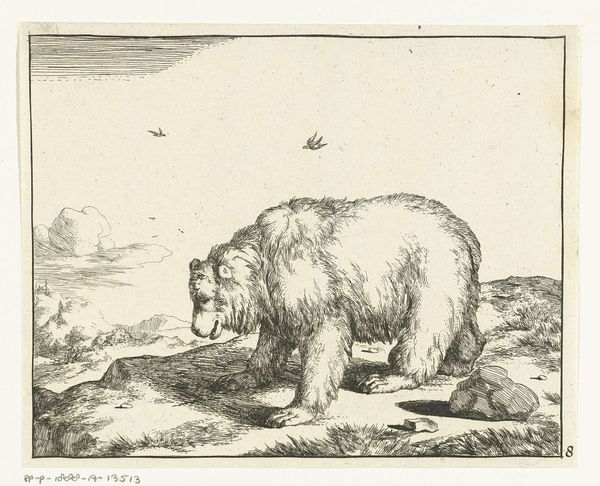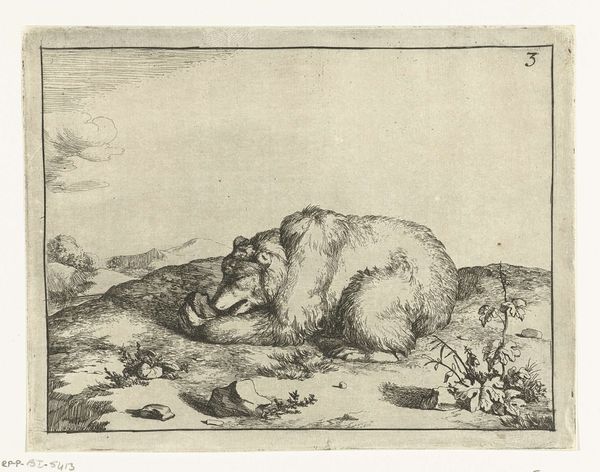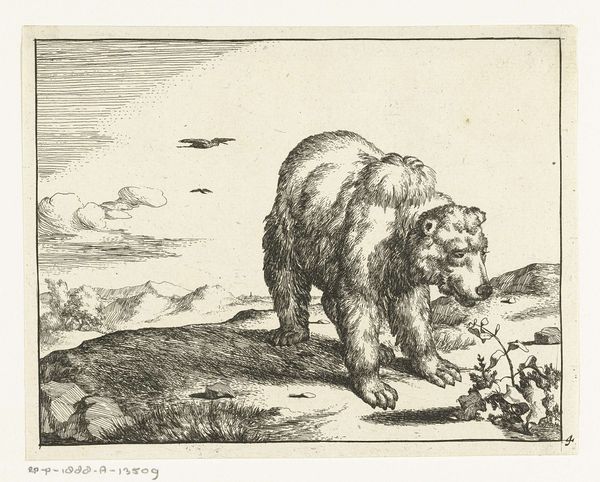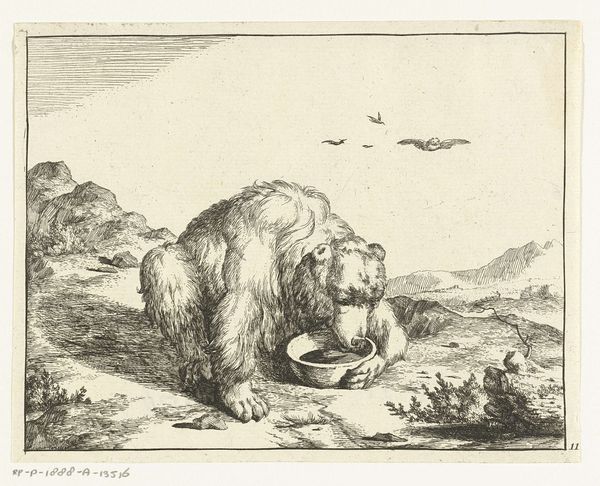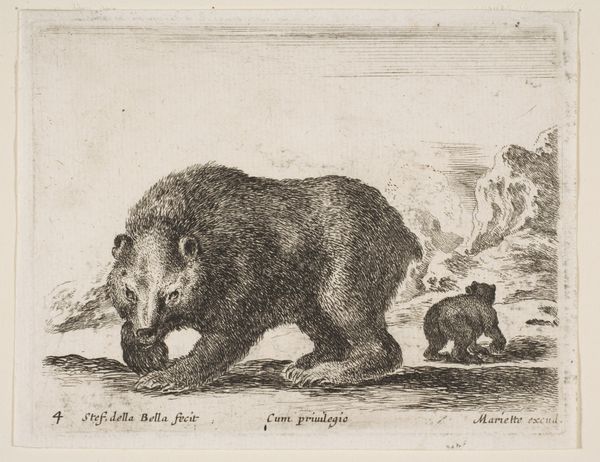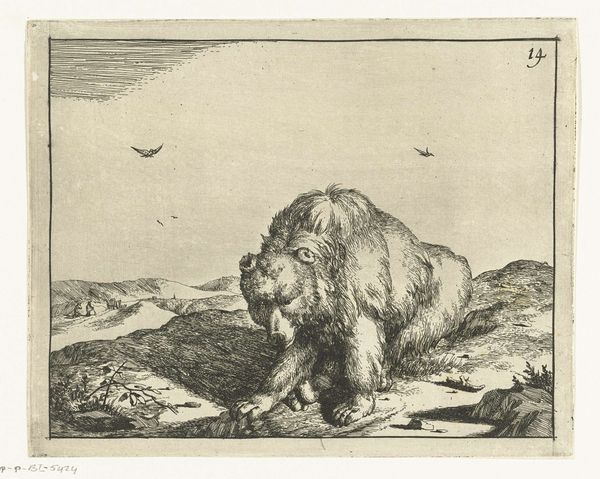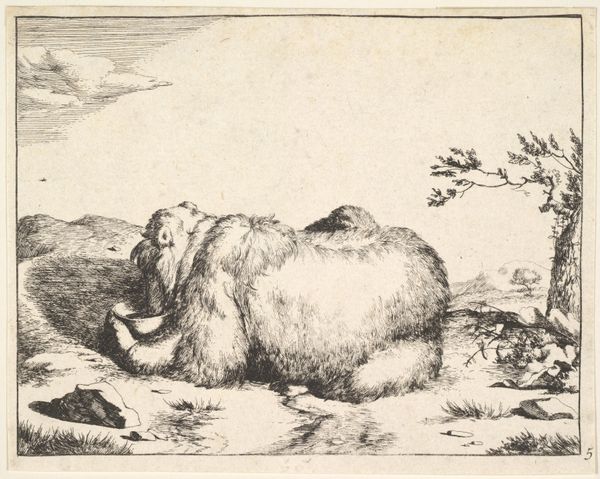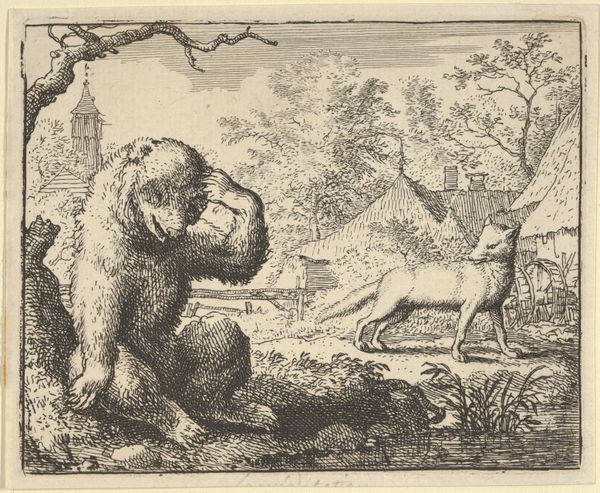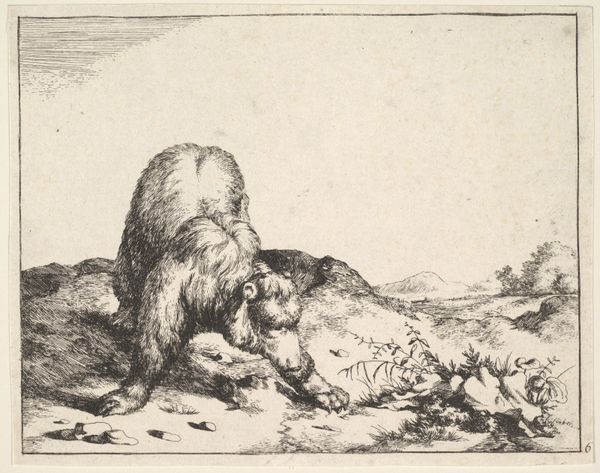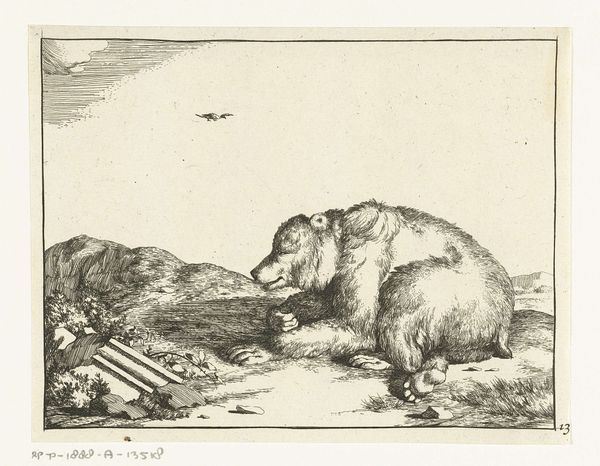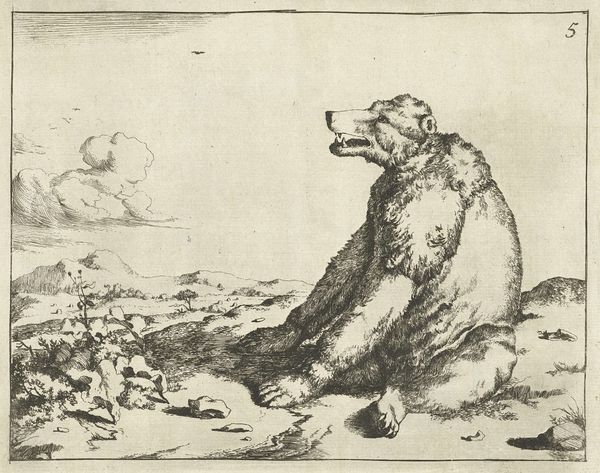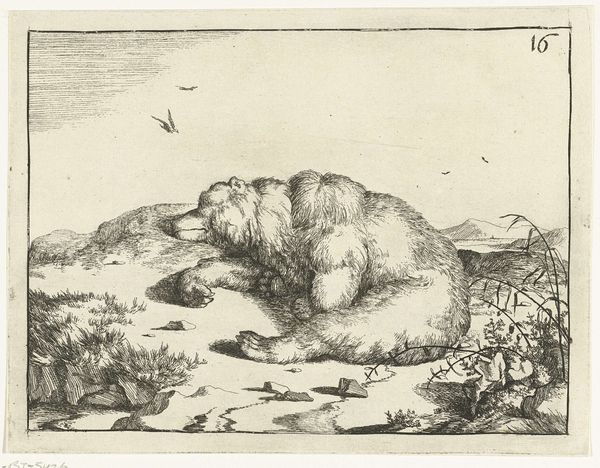
drawing, etching, ink
#
drawing
#
animal
#
dutch-golden-age
#
mechanical pen drawing
#
pen illustration
#
pen sketch
#
etching
#
pencil sketch
#
landscape
#
personal sketchbook
#
ink
#
ink drawing experimentation
#
pen-ink sketch
#
sketchbook drawing
#
storyboard and sketchbook work
#
sketchbook art
#
realism
Dimensions: height 117 mm, width 147 mm
Copyright: Rijks Museum: Open Domain
Marcus de Bye made this print of a seated bear, using etching techniques. The etched lines create a stunningly tactile representation of the animal's fur. Etching involves covering a metal plate with a waxy, acid-resistant layer. The artist then draws through this layer, exposing the metal beneath. When acid is applied, it bites into the exposed lines, creating grooves. The deeper the bite, the darker the line will appear in the print. Consider the labor involved, from preparing the plate, to incising the design, to the chemical process of etching, and finally the printing itself. De Bye would have been a master of this meticulous craft, controlling the acid's effects to achieve subtle tonal variations, skillfully rendering the bear’s form and texture. The print serves as a potent reminder of the skill and time invested in pre-industrial image-making. It bridges the gap between craft and fine art, prompting us to value the artistry embedded in its production.
Comments
No comments
Be the first to comment and join the conversation on the ultimate creative platform.
